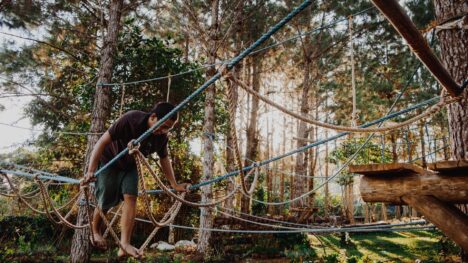When Aung San Suu Kyi began to speak at Rangoon’s Schwedagon pagoda on August 26, 1988, somewhere between 300,000 and 1 million Burmese people gathered to hear what the daughter of Aung San— regarded by many as the architect of the Burmese nation—had to say. She stood in front of a portrait of her father and the heart of her message was simple: “I could not as my father’s daughter remain indifferent to all that is going on. This national crisis could in fact be called the second struggle for national independence.”
It was a landmark moment in a struggle that has cost Suu Kyi and her family dearly, that saw Suu Kyi awarded the Nobel Peace Prize in 1991, and that continues to this day as the Burmese people seek to escape the brutal oppression of the ruling military regime. But it was not the beginning of the story.
an international woman
Aung San was assassinated, together with six of his colleagues, by a political rival on July 19, 1947, at the age of 32, when Suu Kyi was just two years old. Following her husband’s death, Daw Khin Kyi worked for 20 years in the Burmese public service, including becoming the first woman to be appointed as an ambassador for Burma, representing her country in India for seven years. She resigned from these roles in 1967, when she felt she could no longer represent the dictatorial govdisappearernment that had come to power in her home country.
In 1960, Suu Kyi moved with her mother to Delhi, India, where she completed high school and began studying political science at college level. There, she was first exposed to the political philosophies of nonviolence employed by Mahatma Ghandi in the struggle for Indian independence. But before completing her studies, Suu Kyi gained a place at St Hugh’s College, Oxford, to study politics, philosophy and economics, and she moved to England in 1964.
Suu Kyi was one of very few Asian women studying at Oxford at that time and was initially something of an oddity among her colleagues. But reflecting on her friendship with Suu Kyi, one of her follow students expressed appreciation for her “determination and fierce purity, as well as her ever-vigilant curiosity.” But there was also another element to Suu Kyi’s determination. “Even then, she thought she must one day do something for her people,” recalls another friend from student days at Oxford.
Suu Kyi completed her degree in 1967 and, while staying with friends and working in London for a brief period, she began a friendship with her husband-to-be Michael Aris. He was also a recent graduate, and soon left London for what would be a six-year posting as tutor and English-language instructor to the royal family of the Himalayan nation of Bhutan. It was to be a long-distance romance.
Meanwhile, Suu Kyi was accepted for postgraduate study at New York University. But within a couple of months of arriving in New York, further study was put on hold as Suu Kyi, helped by expatriate Burmese officials including then-UN secretary-general U Thant, joined the permanent staff of the United Nation’s Advisory Committee on Administrative and Budgetary Questions, working primarily with budgetary considerations for the UN Development Program and World Health Organisation.
a family woman
Suu Kyi and Michael Aris became engaged during his visit to New York in 1970. She visited him in Bhutan the following year and they married on January 1, 1972, in England. Suu Kyi had to overcome her own reservations and family objections, as well as the continuing possibility in her mind that, one day, she may have to return to Burma for the sake of her people. In a letter to Aris before their wedding, she wrote, “I only ask one thing, that should my people need me, you would help me do my duty by them.”
For the next 10 years, Suu Kyi settled into the primary roles of wife and mother to their two boys, Alexander and Kim, living first in Bhutan, then London and Scotland, before returning to Oxford where Aris completed his doctoral studies. At Oxford, Suu Kyi worked part-time in the university library, developing a collection of Burmese literature. She also completed Aung San, a short biography of her father, which was published in 1984 by the University of Queensland Press, as well a series of books for young people profiling the countries of Bhutan, Nepal and Burma.
In 1985, Suu Kyi embarked on her own doctoral studies and spent nine months at the University of Kyoto in Japan, followed by time at the Simla Institue in northern India with her husband. They returned to Oxford in 1987. But Suu Kyi did not finish her studies. In the words of Michael Aris, “It was a quiet evening in Oxford like many others, the last day of March 1988. Our sons were already in bed and we were reading when the telephone rang. Suu picked up the phone to learn that her mother had suffered a severe stroke. She put the phone down and at once started to pack. I had a premonition that our lives would change forever.”
a political leader
By the time Suu Kyi arrived back in Burma, her country had endured 26 years of brutal military dictatorship. The nation was in the midst of political, economic and social crises, had been listed among the world’s 10 poorest countries and was largely isolated from the rest of the world. The hospital in which Suu Kyi’s mother was treated was filled with victims of the violent crackdown against student protesters.
Suu Kyi’s mother returned home, where Suu Kyi and her family continued to nurse her. Dissidents both of her father’s generation and of the younger generations began regularly visiting the house. Against a backdrop of continuing democracy protests and brutal government responses, including the deaths of more than 3000 protestors in the month of August, Suu Kyi weighed up how she would respond. Her decision was announced to Burma and to the world in her speech of August 26: she saw herself as a potential mediator in the crises and called for a nonviolent resolution to the uprising.
For a few weeks, it seemed the continuing protests would succeed. But then the military struck back and an estimated 10,000 people were killed, in six months of violent and brutal oppression. Thousands more were arrested, many never heard from again or escaped across the borders into Thailand and China. The military regime seemed more entrenched than ever, despite ongoing unrest and violence between rival factions.
With her popularity soaring among the Burmese people, Suu Kyi was growing rapidly in her assessment of her role. Looking to save face in the international community, Burma’s military rulers announced democratic elections, albeit with strict limitations designed to hobble any potential opponents. But Suu Kyi, her colleague and supporters swung into action, inaugurating the National League for Democracy (NLD) and engaging supporters across the nation to circumvent—and sometimes flout—the restrictions on campaigning.
Suu Kyi’s mother died in late December that year, and Burmese immigration officials allowed only a brief visit from her husband and sons for Daw Khin Kyi’s funeral. Struggling to keep the NLD together and continuing her appeals to the outside world, Suu Kyi was left without any family support.
Into 1989, the military rulers continued the military crackdown with continuing arrests, torture and disappearances a constant risk for anyone voicing opposition. The leadership also officially changed Burma’s name to Myanmar, a name emphasising the Burman ethnic majority’s dominance.
Suu Kyi’s profile continued to grow in the wider world, with increasing comparisons with two of her ideological heroes Mahatma Ghandi and Martin Luther King. Facing extreme military intimidation as she travelled the country, she continually urged her supporters to resist nonviolently and to focus on the need for democracy and human rights. In a letter to Aris in April, 1989, she wrote, “In spite of all the difficulties I feel that what I am doing is worthwhile— the people of Burma deserve better than this mess of inefficiency, corruption and misuse of power.”
under house arrest
As anniversaries of the previous year’s outrages approached, the situation in Burma became increasingly tense as July 19—the 42nd anniversary of Aung San’s death—neared. Early on the morning of July 20, troops surround Suu Kyi’s residence. All friends and supporters present at the house were arrested and Suu Kyi was placed under house arrest. The only option she was given was to leave the country, on the condition that she would never return.
With Suu Kyi “out of the way,” the military leadership felt confident in holding the promised election on May 27, 1990, and allowing the process to proceed openly and fairly. But they had made a serious misjudgment. In a landslide result, the NLD—in the minds of most voters, a vote for Aung San Suu Kyi—won about 80 per cent of the constituencies across the nation. With limited response from the wider world, the ruling generals stalled and then largely ignored the election result. It became an offence to even own a photograph of Suu Kyi, and opposition figures continued to be arrested, tortured and mistreated.
While Aris had been permitted to visit his wife twice in 1989, from mid- 1990 she was cut off from contact with her family. But her family, led by her son Alexander, accepted the Nobel Peace Prize in late 1991. He was quick to suggest that his mother would “begin by saying that she accepts the Nobel Prize, not in her own name but in the name of all the people of Burma.” Many other awards and recognitions were to follow for Suu Kyi, recognising her growing status as an international icon.
This was only added to with the publication of Freedom From Fear, a book of writings by and about Suu Kyi, edited by her husband. In this volume, Suu Kyi set out her political and moral vision, affirming her commitment to nonviolence. According to Suu Kyi, the most important revolution for Burma would be “that of the spirit, born of an intellectual conviction of the need for change in those mental attitudes and values which shape the course of a nation’s development.”
Suu Kyi remained under house arrest for just short of six years, with only limited contact with her family or anyone else from her country or the outside world. But on July 10, 1995, she was surprised to be told that her imprisonment was ended. That evening, Suu Kyi met with other NLD leaders and, as she described it, “we simply decided to pick up where we had left off six years ago, to continue our work. It remains in my memory as a quiet day, not a momentous one.
“We are still prisoners in our own country,” Suu Kyi told one interviewer. “[But] I’ve always felt that if I started hating my captors . . . I would have defeated myself.”
a prisoner still
Suu Kyi continued her international writing and her tense interactions with Burma’s self-appointed government. Her husband and other members of her family were able to visit in late 1995 but were not granted visas after that time. The cruelty of this isolation reached its peak in January, 1999, when Aris was diagnosed with advanced prostate cancer and had only months to live. Still the Burmese authorities would not issue a visa.
Suu Kyi knew that if she left Burma she would be unlikely to be allowed to return. Aris continued to submit visa applications, which were consistently rejected. The Burmese military, who regularly monitored Suu Kyi’s phone calls, began to disconnect calls to Aris, in hope of forcing Suu Kyi to leave the country. Aris died, aged 53, in Oxford on March 27, 1999, more than three years after he had last been permitted to visit Suu Kyi.
After being repeatedly stopped from travel within Burma, Suu Kyi was forcibly detained and returned to house arrest on September 21, 2000, while attempting to board a train. This second period of house arrest continued until May 6, 2002, and was surrounded by the regime’s continuing pretence of democratic reforms, for the sake of their international standing and economic interests.
Suu Kyi resumed her regular trips into the Burmese countryside, visiting NLD members and being hailed as a national hero by crowds wherever she went but also braving intimidation of paramilitary regime supporters. On the night of May 30, 2003, more than 70 NLD supporters were killed, with 100 injured and hundreds more detained or missing, when Suu Kyi’s motorcade was attacked by more than 1000 men near the northern town of Depayin. Suu Kyi narrowly escaped the massacre but was arrested and jailed.
Suu Kyi’s whereabouts were unknown for a number of weeks. She was held first in Rangoon’s infamous Insein prison before being moved to another facility. By mid-September, she was hospitalised and, after 10 days treatment, she was returned to house arrest at her Rangoon home.
The oppression, brutality, tragedy and inhumanity of Burma continues today. And Suu Kyi, still under house arrest, has been isolated since 2003. Now 62, there are reports her health is failing. But still she stays. For Aung San Suu Kyi, her freedom at the cost of abandoning her people is not worth the price.
Source: This article is based largely on Perfect Hostage: A Life of Aung San Suu Kyi by Justin Wintle (Hutchinson, London, 2007).









